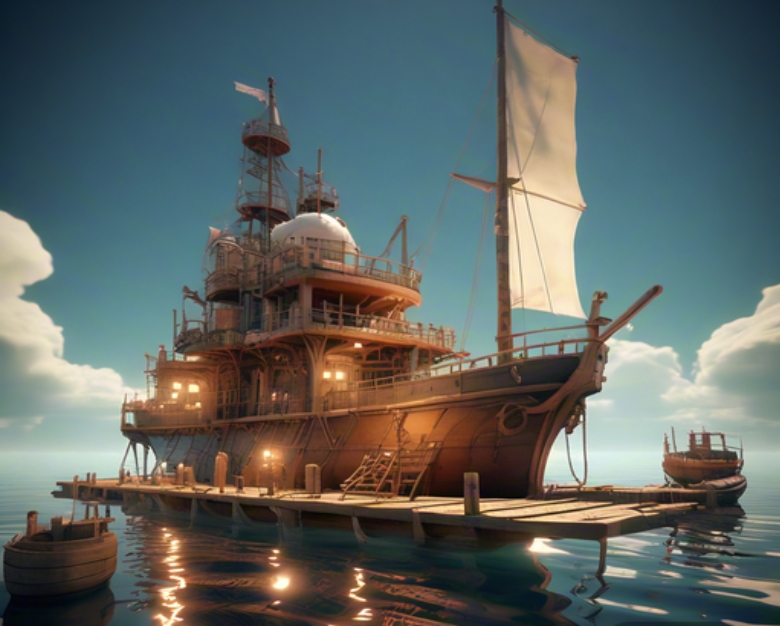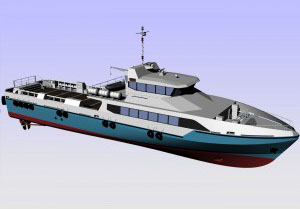BLOG
How Big is a Ship Shipping Ship?
Understanding the size and capacity of a ship shipping ship can be quite intriguing. These vessels, designed to transport goods and passengers across the seas, come in various sizes and types, each serving specific purposes. In this article, we’ll explore the different dimensions and capabilities of ship shipping ships, providing a comprehensive insight into their significance in global trade.

The Basics of Ship Shipping Ships
What is a Ship Shipping Ship?
A ship shipping ship is a vessel designed to carry goods and passengers across water bodies. These ships vary significantly in size, design, and purpose. They are integral to international trade, facilitating the movement of a vast array of products from one part of the world to another.
Types of Ship Shipping Ships
Ship shipping ships can be classified into several categories based on their design and purpose. Some of the most common types include:
- Bulk Carriers: Designed to transport bulk goods such as coal, grain, and ore.
- Container Ships: Used to carry standardized shipping containers.
- Passenger Ships: Built to transport people, including cruise ships and ferries.
- Oil Tankers: Used for transporting crude oil and its derivatives.
- Chemical Tankers: Designed for carrying chemical products.
- Tugs: Small, powerful boats used to maneuver larger vessels.
- Fiberglass Boats: Lightweight and durable boats made from fiberglass.
- Engineering Ships: Specialized vessels for construction and engineering tasks.
Peida Machinery Group Co., Ltd.

Fast crew boat
Before diving deeper into the specifics of ship sizes, let’s take a moment to highlight a leading player in the ship manufacturing industry: Peida Machinery Group Co., Ltd.
About Peida Machinery Group Co., Ltd.
Peida Machinery Group Co., Ltd. is located in China’s Yangtze golden waterway, in the Yangtze River region. This shipyard firm specializes in the design, construction, and trade of various types of ships. They produce:
- Bulk Shipping Ships
- Container Ships
- Passenger Ships
- Oil Tankers
- Chemical Ships
- Tugs
- Fiberglass Boats
- Engineering Ships
Peida Machinery Group also deals with second-hand ships and has been approved by Classification Societies, meeting all kinds of client needs. They sincerely welcome friends from all over the world to visit and collaborate.
Understanding Ship Sizes
Factors Influencing Ship Size
The size of a ship shipping ship is influenced by several factors, including its intended use, the volume of cargo or passengers it needs to carry, and the specific routes it will navigate. Key dimensions to consider include:
- Length Overall (LOA): The total length of the ship from the tip of the bow to the end of the stern.
- Beam: The width of the ship at its widest point.
- Draft: The vertical distance between the waterline and the bottom of the hull (keel).
- Gross Tonnage (GT): A measure of the ship’s overall internal volume.
- Deadweight Tonnage (DWT): The total weight a ship can carry, including cargo, fuel, crew, and provisions.
Examples of Ship Sizes
To give you a better understanding, let’s look at some typical sizes for different types of ships:
Bulk Carriers
- Handysize: LOA up to 200 meters, Beam up to 32.2 meters, DWT up to 50,000 tons.
- Panamax: LOA up to 294.13 meters, Beam up to 32.31 meters, DWT up to 80,000 tons.
- Capesize: LOA up to 400 meters, Beam up to 61 meters, DWT up to 400,000 tons.
Container Ships
- Feeder: LOA up to 200 meters, Beam up to 32.2 meters, Capacity up to 3,000 TEUs.
- Panamax: LOA up to 294.13 meters, Beam up to 32.31 meters, Capacity up to 5,000 TEUs.
- Ultra Large Container Vessel (ULCV): LOA up to 400 meters, Beam up to 61 meters, Capacity up to 24,000 TEUs.
Oil Tankers
- Aframax: LOA up to 245 meters, Beam up to 42 meters, DWT up to 120,000 tons.
- Suezmax: LOA up to 275 meters, Beam up to 48 meters, DWT up to 200,000 tons.
- VLCC: LOA up to 330 meters, Beam up to 60 meters, DWT up to 320,000 tons.
Passenger Ships
- Ferries: LOA up to 200 meters, Beam up to 30 meters, Capacity up to 2,000 passengers.
- Cruise Ships: LOA up to 360 meters, Beam up to 65 meters, Capacity up to 6,500 passengers.
The Role of Peida Machinery Group in Ship Manufacturing
Advanced Technology and Expertise
Peida Machinery Group Co., Ltd. utilizes advanced technology and has a team of experienced engineers to design and construct high-quality ships. Their commitment to innovation and excellence has positioned them as a leader in the ship manufacturing industry.
Product Range
Peida Machinery Group offers a wide range of ships, catering to various needs:
- Bulk Shipping Ships: Ideal for transporting large quantities of bulk goods.
- Container Ships: Efficient for carrying standardized shipping containers.
- Passenger Ships: Comfortable and safe for transporting people.
- Oil and Chemical Tankers: Designed for the safe transportation of liquids.
- Tugs and Engineering Ships: Essential for port operations and construction projects.
- Fiberglass Boats: Lightweight and durable, suitable for various applications.
Global Reach
With a strategic location in the Yangtze River region, Peida Machinery Group has access to key waterways, facilitating the global distribution of their ships. Their reputation for quality and reliability has earned them clients from all over the world.
How Ship Sizes Impact Global Trade
Efficiency and Capacity
Larger ships can carry more cargo, making them more efficient for long-distance trade. This efficiency reduces transportation costs and carbon emissions, contributing to more sustainable shipping practices.
Port Infrastructure
The size of a ship determines the type of port infrastructure required. Larger ships need deeper ports and more extensive loading and unloading facilities. Investing in port infrastructure is essential to accommodate the growing size of modern ships.
Economic Implications
The capacity of ship shipping ships directly impacts global trade economics. Larger ships enable economies of scale, reducing the cost per unit of transported goods and making international trade more affordable.
FAQs
1. How are ship sizes measured?
Ship sizes are measured using various dimensions, including Length Overall (LOA), Beam, Draft, Gross Tonnage (GT), and Deadweight Tonnage (DWT). These measurements provide a comprehensive understanding of a ship’s size and carrying capacity.
2. What factors influence the size of a ship?
The size of a ship is influenced by its intended use, the volume of cargo or passengers it needs to carry, and the specific routes it will navigate. Larger ships are typically used for long-distance trade routes and bulk transportation.
3. Why is it beneficial to rent ships from Peida Machinery Group Co., Ltd.?
Peida Machinery Group Co., Ltd. offers high-quality ships designed with advanced technology and built by experienced engineers. Their wide range of ships, including bulk carriers, container ships, and passenger ships, cater to various needs. Additionally, their global reach and reputation for reliability make them a preferred choice for clients worldwide.
In conclusion, understanding the size and capacity of ship shipping ships is crucial for anyone involved in the maritime industry. These vessels play a vital role in global trade, and companies like Peida Machinery Group Co., Ltd. are at the forefront of providing high-quality, innovative ships to meet the diverse needs of clients around the world.
BLOG
News
Contact Us
Contact: Peida Machinery Group Co. ,Ltd.
E-mail: info@peidaship.com
Tel: 0086 0556 5248992
Phone: 008618855615637
Add: City Anqing, Anhui Province